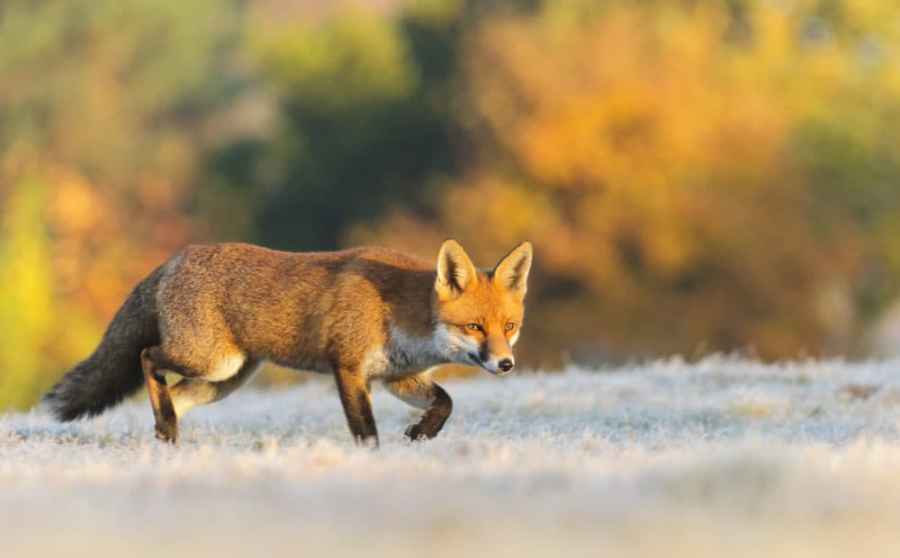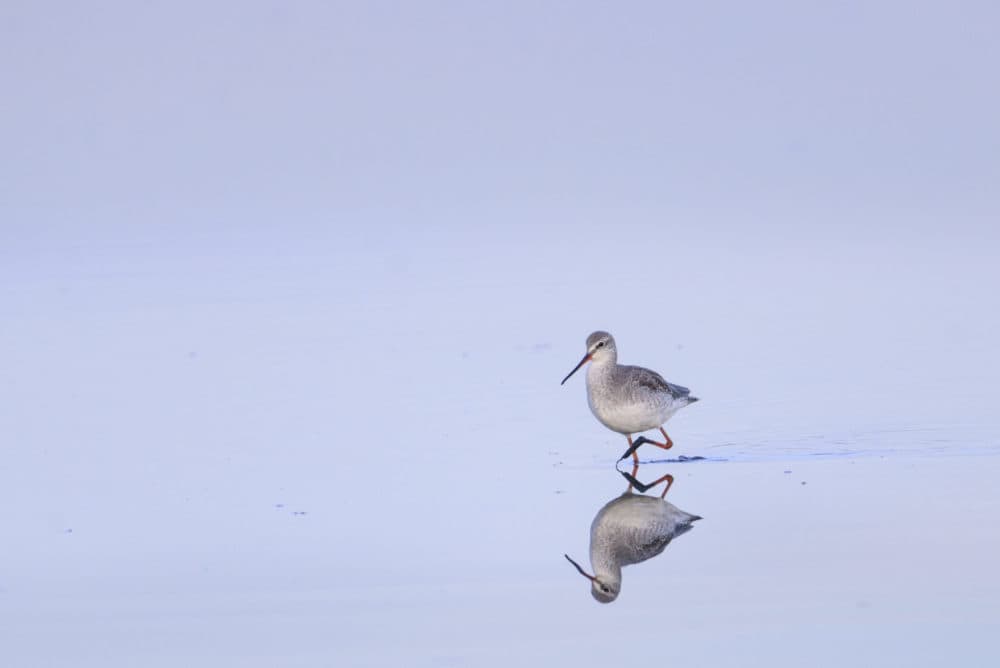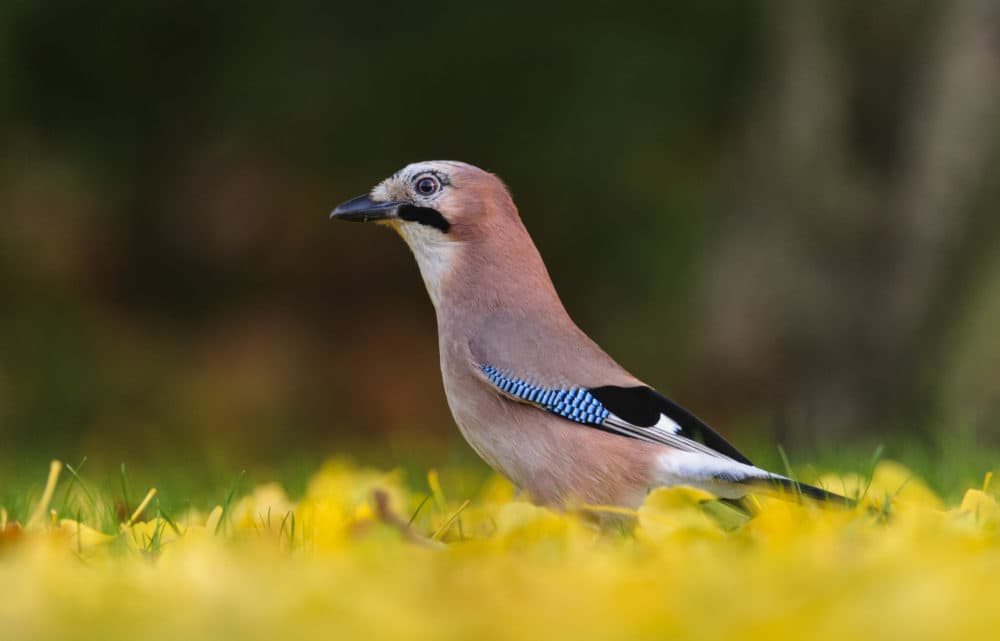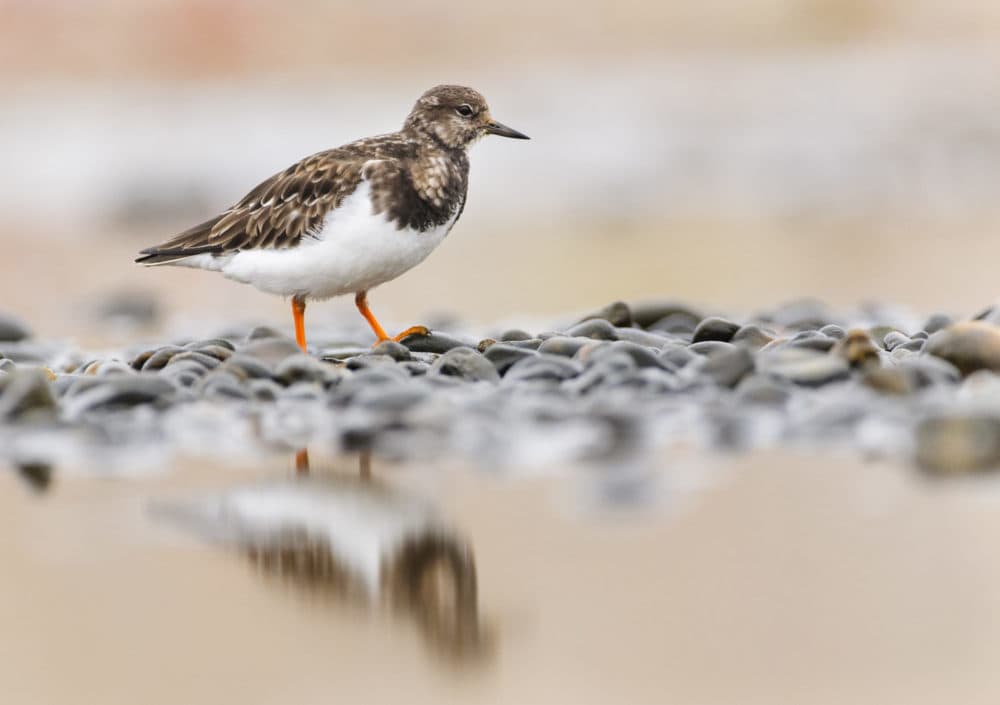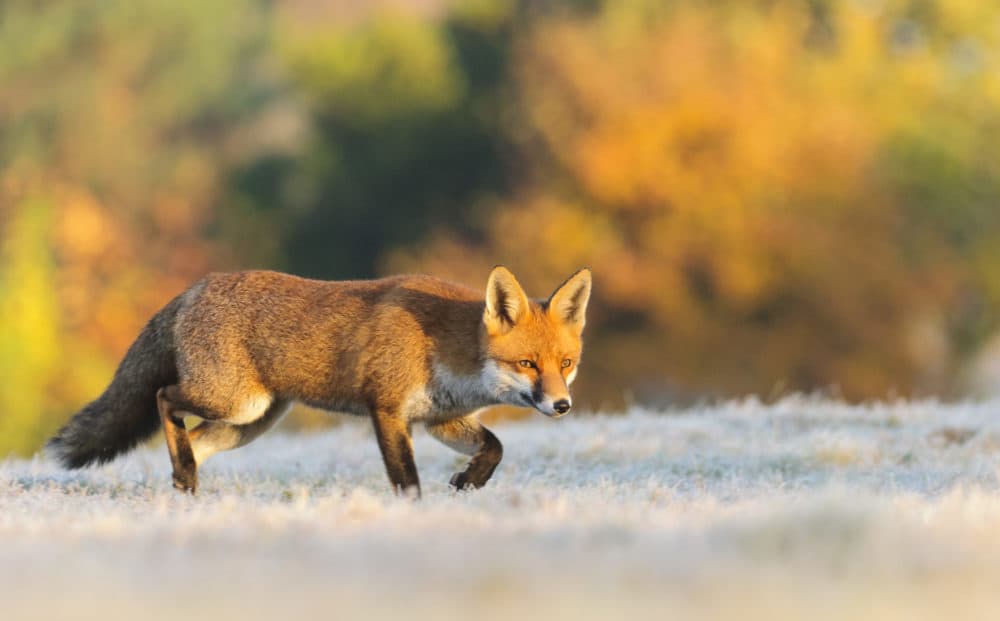From starlings to red deer, top wildlife photographer Oscar Dewhurst shares his essential tips for great autumn wildlife photography
Autumn is a fantastic time for wildlife photography. After late summer, when birds are often quiet and can look scruffy after the efforts expended during the breeding season, I always look forward to the approach of autumn. For one thing, gone are the days of exhausting 3.30am alarms to get out before the sun rises! Long hot days are replaced by gorgeous cold misty mornings and the chance of that first frost carpeting the ground. Autumn brings with it a totally new palette of colours: the greens of summer are followed by a fantastic array of yellows, oranges and reds before the leaves fall and the colours are superseded by the bleakness of winter.
Best time of day for Autumn wildlife photography
As the days get shorter, the lower angle of the sun means you can shoot for longer during the day.In addition to this, you don’t have to worry as much about losing details in shadow and highlight areas when the sun is lower. However, I think it’s always worth making the effort to be out at sunrise or sunset whenever you’re photographing wildlife. The light is at its nicest when it is just above the horizon, and wildlife tends to be most active at sunrise, with another peak just before the end of the day.
There are usually fewer people around at these times too, so you’re less likely to have your subject disturbed by passers-by. Shooting early or late in the day when the sun is very low also allows you to experiment with the available light for a variety of different shots, such as shooting into the light. That’s not to say there’s no point shooting in overcast light.
Photographing when it’s cloudy means you can stay out for much longer in the day. It also lends itself very well to certain types of images, and allows you to get fantastic detail. Of course, the other thing with wildlife is you won’t get any photos if you’re not in the field, and something amazing could happen at any moment, so it always pays to maximise your time out there! Types of images Autumn is a time of change. The weather gets colder, and the days shorter.

Mute swan (Cygnus olor) family swimming, Richmond Park, London Nikon D850, 400mm, 1/1250sec at f/2.8, ISO 1600
On the trees, the leaves transform, from vivid green to yellows, oranges and reds, before dropping to the floor and decomposing. In the UK, we see changes in our wildlife too. Our summer migrant birds, such as swallows, warblers and swifts, fly south to warmer climates to spend the winter, with many of them crossing the vast expanse that is the Sahara Desert. These are replaced by species that have bred further north and spend the winter here, such as winter thrushes, waders and finches.
This changing of species, combined with the fantastic conditions, makes autumn a wonderful time to get out with your camera, and there will be loads of possibilities, no matter where you live! Autumn wildlife spectacles Mid to late summer is probably my quietest time for photography. After expending vast amounts of energy ensuring they successfully raise chicks, birds can look very scruffy, and most will have stopped singing.
Spectacular season
In autumn, they start to smarten up again, as it’s not so long before they have to begin thinking about the next breeding season. Autumn is also a time for some of the UK’s most spectacular wildlife sights. Seen all across the country, largely thanks to a number of deer parks, the red deer rut is a fantastic event to watch and photograph, as the stags strut their stuff and compete with each other to win access to mate with as many females as possible. Adorned with impressive sets of antlers, they demonstrate their prowess through loud roaring, and displays can result in almighty fights with other stags where they lock antlers and desperately try to prove that they are the stronger combatants.
On the coasts, flocks of waders build up as they return from their Arctic breeding grounds, with high tide displays at sites such as Snettisham in Norfolk, something not to be missed. As the tide comes in, the rising water level pushes the birds closer and closer, and they wheel around in the air in vast flocks. On the highest tides, the birds are eventually pushed off the mudflats and onto the gravel pits where tens of thousands of them are crammed together. It’s a wonderful sight, and gives great opportunities for experimenting with slower shutter speeds to show the movement of the birds. Check the tide tables to make sure your visit is timed right – if you’re there at low tide, you will see little more than vast expanses of mudflats! For Snettisham, the RSPB has lots of info on its website.
As autumn progresses, starling flocks start to build up, with our population of breeding birds bolstered by birds from Russia and Siberia. At dusk, huge flocks (which can number in the hundreds of thousands at their peak) swirl around the darkening sky, forming a plethora of constantly changing shapes that rise, dip and swirl in perfect harmony. It truly is a stunning sight, and well worth a visit to see.
Get creative
Early autumn mornings can bring some magical conditions for photography. The colder temperatures bring with them the chance of frost and, if the conditions are right, the whole landscape can be encrusted with it. Mist can also add a wonderful atmosphere to your photos. Land cools overnight, then the thermal radiation cools air close to the surface. After this, condensation occurs, as the air can no longer hold its moisture, leading to those conditions that photographers dream of.
However, you often have to work fast, as the sun heating the ground will cause it to soon disappear, so this is another reason to get out early, as it usually doesn’t last long! Shooting into the early morning or late evening light when there is mist can result in images with a stunning orange-coloured wash. Make the most of the wonderful autumn colours while you can, as before you know it the leaves will have dropped to the floor and the trees will be bare and desolate.
If you can position yourself to get the trees behind your subject, you can get some wonderfully coloured backgrounds that will really make the images pop. When photographing wildlife on water, again, think about your background and position yourself accordingly. Another tactic is to place yourself with foliage between you and your subject. This can be used to frame whatever subject you’re photographing, and to capture some lovely out-of-focus areas of colour. It can add depth to them too. The fantastic autumn colours can make images of subjects that photographers normally overlook take on a totally different appearance.
Camera settings
I tend to use the same camera settings for most of my wildlife photography, but everyone likely has their own preferences. For most cases, I use aperture priority, with my camera set to its fastest frame rate and single spot autofocus (that I can move around depending on where I am placing my subject in the frame). I also tend to use spot metering, so my exposure is determined from whatever I am focusing on. However, I don’t stick religiously to these. I do use manual exposure sometimes, particularly if the light is challenging. For example, if my subject is against a particularly light or dark background, or I am photographing into the light.
This allows you total control over your exposure, but it does mean you need to remember to change it if the light changes, so don’t forget! Keep checking the images on your LCD and you should avoid making this mistake. When photographing in mist, I often overexpose my images as otherwise I find I need to brighten them in the editing process, which also increases the noise. To brighten up images I’ll use tools like Lightroom’s Clarity and Dehaze sliders, particularly if the mist/fog was especially thick.
Oscar’s tips for autumn wildlife photography subjects
Garden birds
As the weather gets colder, you will likely see more birds appearing in your garden again, so it’s a great time to get some bird feeders out. Find some natural perches and place them so that the birds will land there before they get to the feeder, but think carefully about the backgrounds.
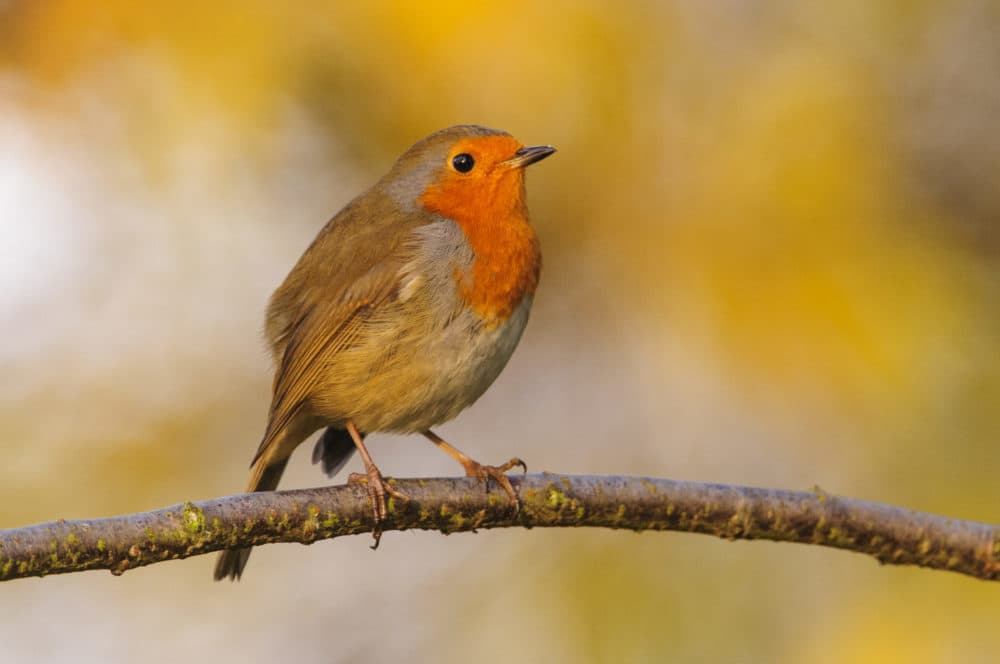
European robin (Erithacus rubecula) perched on tree branch with autumn colours behind. London. 11/12
Jays collecting food
In autumn, birds such as jays will be starting to cache food for the cold lean winter months. When acorns become ripe, you may often see jays regularly returning to the same tree, before heading off to store it somewhere for later use.
Wildlife in autumn leaves
The ground becomes carpeted in reds, oranges and yellows, which can look lovely in photos. Try throwing some birdseed or nuts into the leaf litter and see if it entices a squirrel or two. By shooting from ground level, the colours become a lovely out-of-focus wash, rather than individual leaves.
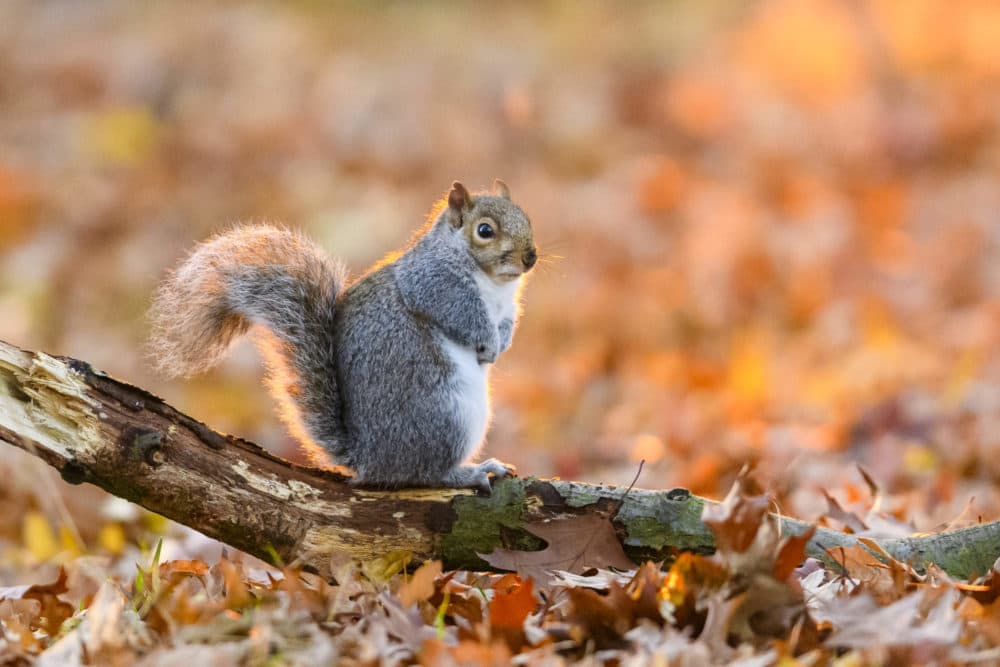
Autumn waders
Many species that have bred in the Arctic will be returning south to spend the winter along the UK’s coastline. Some locations where the highest tides push huge flocks onto gravel pits, have incredible displays. Along most of the UK’s coastline you should find some species, such as this turnstone.
Hobbies
Hobbies have their young later than many birds. September is a good time to see the juveniles practising their hunting skills as they try to catch dragonflies. Wetlands and reedbeds are favoured spots for them. They are incredibly quick and agile, so successfully capturing images may take many attempts.
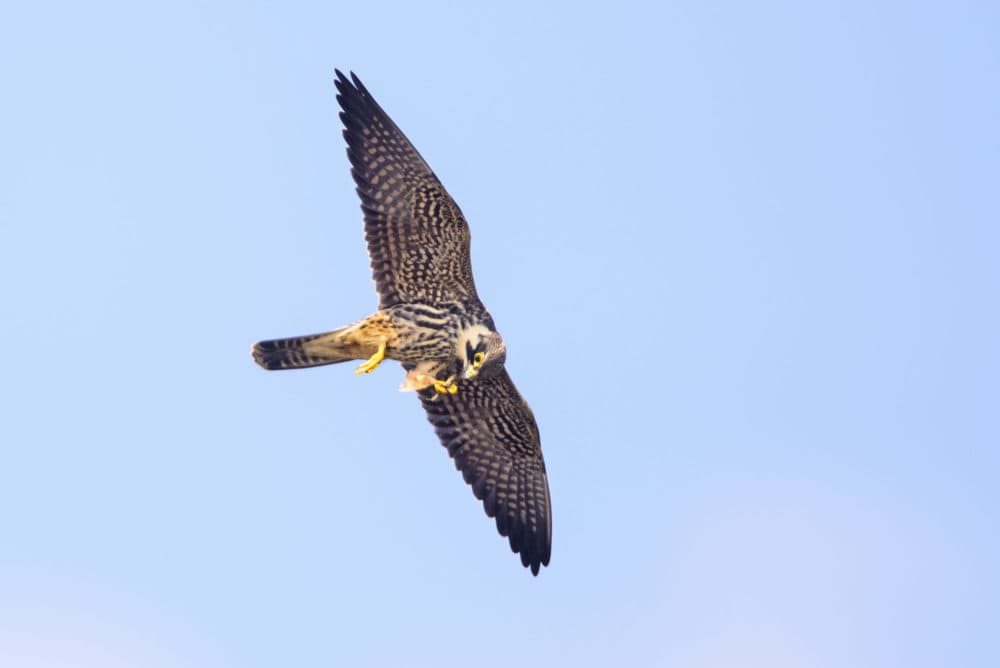
Early winter migrants
Over the next couple of months, winter migrants will start pouring into the UK from their northern breeding grounds. Waxwings are always a big draw for photographers, and for good reason – they’re stunning! If you’re in the north and east of the country, keep an eye out for some of the earlier returners.
Why this shot works
This image features two of my favourite things about autumn. First, the fantastic colours that cover the trees as the leaves transform before dropping to the ground. Secondly, the frost carpeting the ground. Taken in mid-November, I had seen it was forecast to be very cold overnight and clear the next day, so I set my alarm to get to my fox site for sunrise. Fortunately, the forecasters had got it right, and I was delighted to see such promising conditions for photography. All I needed to do now was find some foxes to photograph.
Having briefly seen them disappear into some thick scrub where I couldn’t follow them. There was nothing I could do but sit and wait. After some time, one of them emerged and started heading away from me. I could see it was about to come into an open area of short grass. If I got far enough ahead of it I could get the autumn foliage in the background. I managed to get into position quickly and fortunately for me, they were very confiding. The fox wasn’t bothered about me, and I was able to get myself in the perfect spot to photograph it as it trotted past just where I predicted. As well as the frost and colours, I also love the light hitting the fox right in the face, showing off its gorgeous fur.
10 tips for capturing the deer rut
1. Get your timing right
The deer rut runs between mid-September to the end of October, peaking in early to mid-October.
2. Set your alarm
Deer are most active first thing, and this coincides with the best conditions like frost, low sunlight and mist.
3. Watch the weather
Clear skies and mist are perfect as you can get some wonderfully atmospheric images. When it’s cold, the deer’s breath will condense too.
4. Take gloves
Although it can be warm during autumn days, before the sun comes up it can be really quite cold, particularly when you’re carrying around a metal tripod. Gloves can be essential!
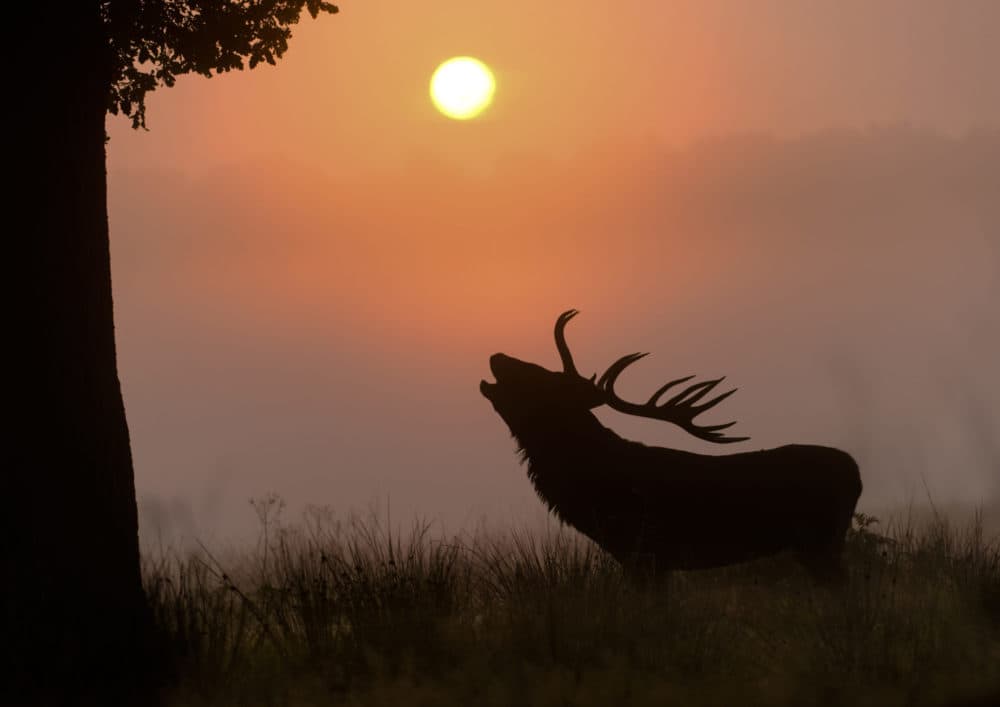
Red Deer (Cervus elaphus) stag roaring in grassland at sunrise. Richmond Park, London Nikon D800, 200-400mm, 1/800sec at f/4, ISO 640
5. Wear waterproofs
Even if it’s not raining, long dew-laden grass can drench your trousers – I’ve learnt the hard way. Put some waterproof trousers and boots on so you’re not soaked after half an hour!
6. Know the behaviour
If you can recognise the events leading up to various behaviours, you’ll have a much better chance of preparing yourself for when it all kicks off.
7. Don’t just focus on stags
They may be the most impressive, but there’s lots of other activity going on too. One of my favourites is jackdaws and starlings landing on the deer to pick off ticks and parasites.
8. Don’t harass the deer
During the rut, stags are pumped up with testosterone, and there have been incidences in some deer parks of people being attacked. It’s also not fair on the animals to be stressed by people, so always keep a safe distance.
9. Experiment with light
Being out early means you can experiment with different light angles. I love photographing deer into the light, but give it a go and see what you think.
10. Slower shutter speeds
The stags will often charge around after their females, or other stags, so you can experiment with much slower shutter speeds to get some motion blur.
See more advice for photographing the deer rut this autumn here.
Essential kit list for autumn wildlife photography
Binoculars
When I’m out with my camera, I will invariably have a pair of binoculars with me. Not only are they great for finding my subjects, being so much lighter (and clearer to look through) than a camera and telephoto lens, but also sometimes it’s nice to put the camera down and just watch.
Waterproofs
There can be a lot of moisture around in the mornings. Walking through long grass will be enough to soak your legs, as I have found out in the past! Waterproofs will mean you stay dry, particularly if you are going to be lying down to photograph from ground level.
Gloves
Autumnal mornings can be cold before the sun gets up, so I always keep a pair of gloves in my camera bag. You can get some great waterproof pairs that are warm, but thin enough to operate a camera with.
Telephoto lens
For a lot of wildlife photography, a telephoto lens of at least 300mm will make your life a lot easier. My lens of choice is a Nikon 400mm f/2.8. I often add a 1.4x or 2x converter to in order to increase the magnification.
See the best budget telephoto lenses for wildlife photography here.
See more wildlife kit advice in our best cameras for wildlife photography and best kit for wildlife photography guides.
Oscar Dewhurst

Oscar Dewhurst is an award-winning wildlife photographer from London. Currently working for a wildlife documentary production company, he has photographed a wide range of subjects, from urban foxes and bitterns in London to primates in the Peruvian Amazon. Instagram: @oscardewhurst
Find more advice for autumn photography below:
Get your best ever autumn landscapes
Best UK locations for capturing Autumn landscapes

